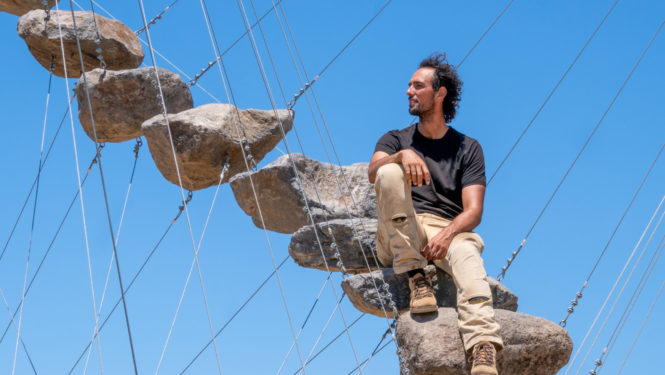Welcome to number eleven in our Boundless Space storytelling series, which introduces just a few of the astonishing artists who contributed work to Boundless Space… The Possibilities of Burning Man, an online charitable auction in support of participating artists and Burning Man Project.
Sculptor Benjamin Langholz’s work is heavy.
In Black Rock City 2019 you may have traversed his “Stone 27” Honorarium piece — 27 impressively suspended stones that climbed to the sky and back down again.
Based in Berlin, Germany, this fall Langholz contributed one of his monumental works to Boundless Space: The Possibilities of Burning Man, the charitable online auction we co-produced with Sotheby’s late last year.
His piece was so heavy it couldn’t be shipped to Sotheby’s New York to be catalogued. Instead it’s going up for online auction in early April at Sotheby’s Cologne. Proceeds from the sale of “Circling Stone 1” will go to Langholz and Burning Man Arts programs.
Online bidding on “Circling Stone” will be open from April 1 until April 7 at 8:09am ET.
If you’re in the UK this spring or summer, stop by Chatsworth House to explore “Stone 40,” Langholz and Gonen’s new installation as part of Radical Horizons: The Art of Burning Man at Chatsworth. The exhibit is open April 9 to October 1, 2022.
We sat down with Langholz to hear about the peak experiences that inspire his work.
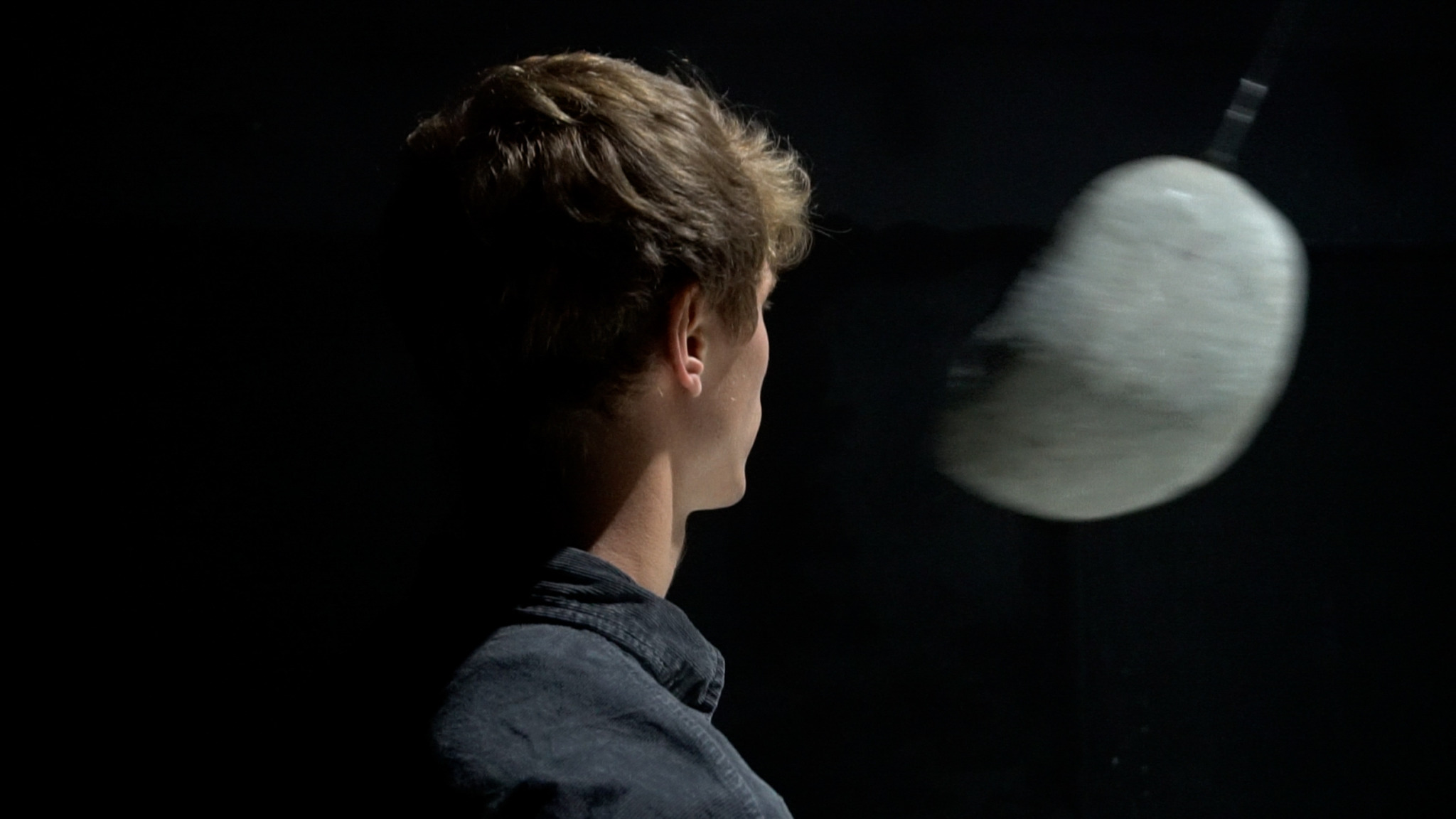
When did you know you were an artist?
When I finished “Stone 27,” I really felt like that was a complete expression of something that came purely from my imagination and my creation, and it really fit the vision of what I was thinking about at the time. I felt with “Stone 27,” this was a full exploration of my own brain.
Before that, I lived in Tokyo for two years as the apprentice to a Kinbaku master, like Shibari or rope bondage. And through that, I learned how to tie people. I took that skill and used it to create space. But I was really using a medium that I was taught, or using a technique that I was taught, and then applying that to my own ideas.
How does one decide to go to Japan to study Kinbaku?
I was traveling around the world and I started coming across what I then called “peak experiences,” which would be followed by moments of clarity. Eventually, I called them “natural highs.” I’d be doing things like climbing mountains in Spain naked where there were no trails. And then I’d be like, can I just get to the top of this mountain?
And when you get there, you feel this overwhelming sense that the world has fallen into place just for you in order to orchestrate that moment. I found that to be incredibly powerful. So much so that I felt if I could find a way to provide that to other people, if I could encapsulate it and show it to people, that the world could genuinely change because of that.
So since then, I’ve been searching for ways to show people this idea of this natural high. It also went along with this train of thought I had, which is that our invention of words is an incredibly inefficient way to convey what we are actually feeling.
For example, I want you to feel my feeling of what it was like to come to the point of studying Kinbaku. But it’s basically impossible with words. I found the rope as a really great way to connect with people and transmit to them directly this sort of feeling and bring this deep presence.
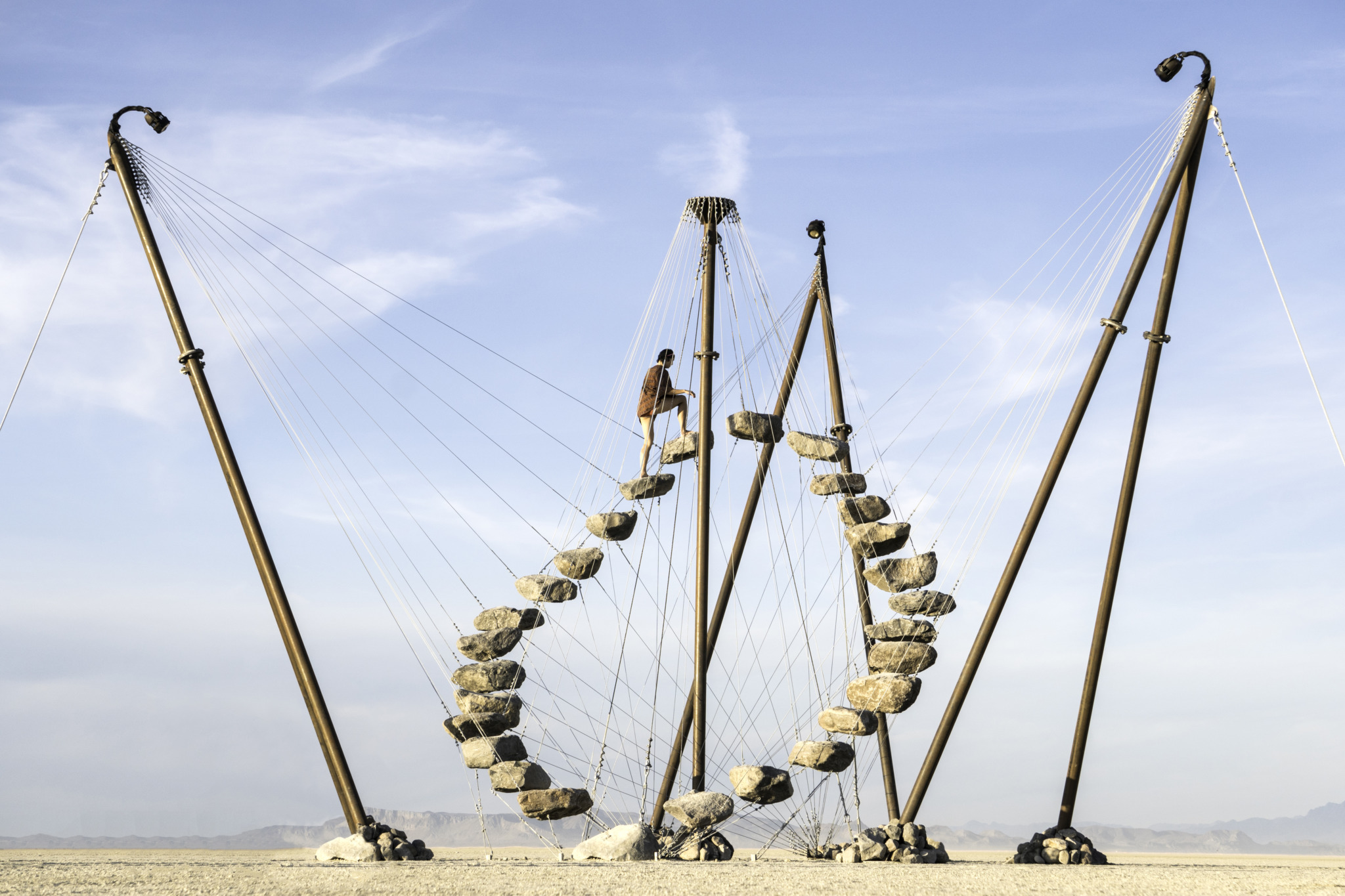
How does that translate to suspending giant pieces of rock?
My joke answer is that I think stones just feel more than people do, which in some ways is kinda interesting to think about. Studying Kinbaku I learned a lot of things in terms of suspension and how things sit in the air and how you need to support them… So yeah, suspension is always on my mind. But the main thing I think I use from Kinbaku, as well as my previous life involved in design, is that I became very familiar with what affects people on an intimate level. I now try to combine the elements I’ve observed in order to create one of those moments where transmission of emotion becomes possible.
To see a human hanging in space is a bit surreal. And to be a human hanging in space is definitely surreal. There’s an aspect of that that comes into the stones, with a huge mass becoming light, “floating.” To be honest, it was just totally obvious to me in the moment where the possibility was presented — both the way I would do it and that it needed to be done. And those are the moments where I just listen to my brain and don’t ask it for an explanation.
Tell us about “Circling Stone 1,” the piece you’ve contributed to Boundless Space.
I really love this piece. The piece consists of a single 500-lb. stone which, attached to a cable, is kept swinging in a perpetual circle by a kinetic element mounted to the ceiling. Visitors are invited to come close, and if they desire, take several intentional steps to find themselves on the inside of the circle created by the orbiting mass. I think it really brings into a gallery space this moment of awe or surrealism. It pushes people out of what they’re comfortable with confronting — risk and responsibility, time as a moment, all these things.
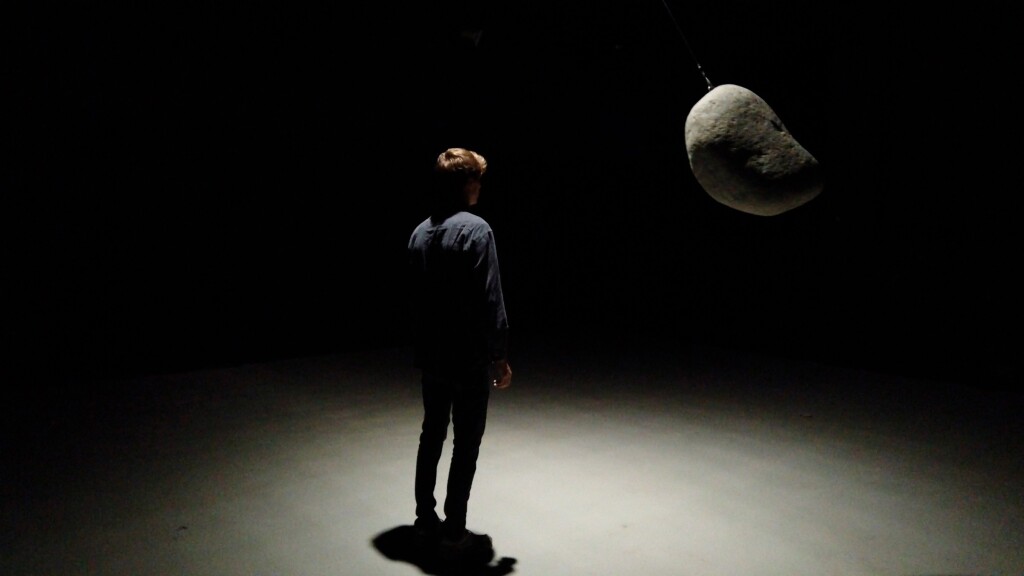
It also brings in this aspect of this moment of presence, natural high, or moment of intensified consciousness. There are these two distinct spaces: this outer space outside of the circle; and then you take several very intentional steps and you can end up in the center, and that’s a very separate space from the outside space.
And all you have to do — that’s the point of the artwork — is that you’re supposed to step into the center, or just look at it and realize you shouldn’t go anywhere near it. That’s also fine. But I think the nicest experience is to step into the center. And then to realize that you just have to do nothing. And that’s kind of interesting as well, right? In order to be safe in that space, you just have to stand there, and you could do that for as long as you want and you’ll be safe. You don’t have to do anything else. But eventually, there will be a moment where you have to take action again and you have to find that right moment and take those very intentional steps.
Watch “Circling Stone 1” (previously called “Swinging Stone”) in motion.
Are you an engineer and an artist?
No. I’ve worked in collaboration with Amihay Gonen since 2019, working towards “Stone 27” for Burning Man, and learned a ton from him. Then occasionally like in the case of “Circling Stone 1” I take what I learned from Amihay and many other generous people who are much more knowledgeable than myself in the ways of creating, and combine what the ingredients they have shared with me into something new from my imagination.
On the larger works it’s especially important to keep the structure and the supports as minimal as possible for that sense of magic, or impossibility. Amihay is incredible to collaborate with in pushing the structure to shrink away, while still making sure it’s built far safer than necessary for the circumstances.
What moved you to contribute this piece to the “Boundless Space” auction?
For one thing, the Burning Man connection. Burning Man really gave me an opportunity to do something I absolutely had no business doing, which I found incredibly activating and has basically steered the trajectory of my life since.
Of course Burning Man affects lots of people’s lives in many ways. I think the biggest thing it gave me was the opportunity to make an Honorarium art piece in 2017. My first one was called “Shibari Sanctuary,” which was a collaboration with my Kinbaku teacher, Kinoko Hajime. We brought a crew of 15 people, most of whom were from Japan.
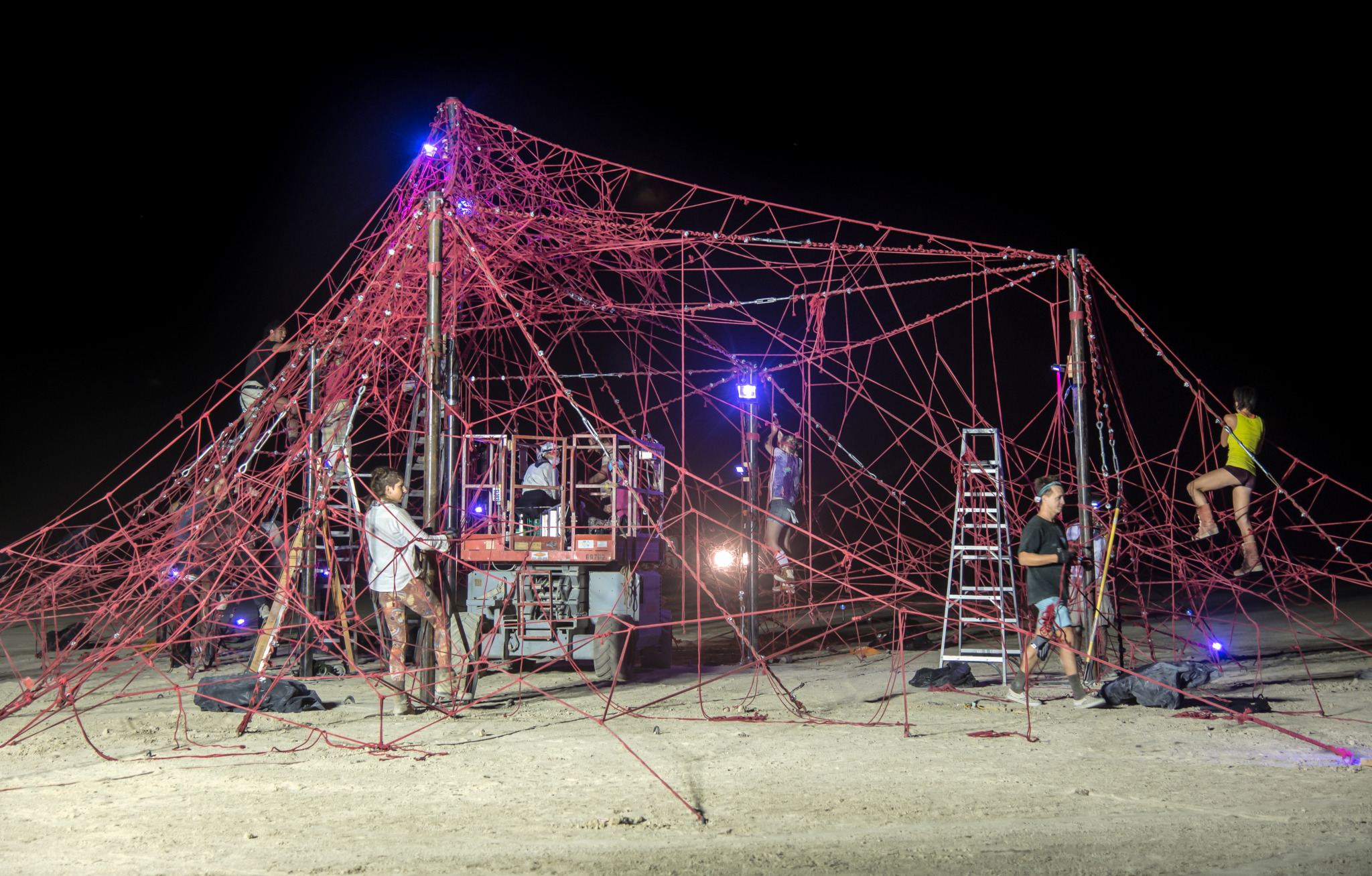
I’m not fluent in Japanese, and they don’t speak much English, and I brought them all to the desert. I really had no business organizing a project that scale or with those materials. We ended up having to use some steel and wire rope, and I had no idea what to do with it. The experience of leading that project, as well as working with those materials, I learned a ton and so I feel deeply thankful for Burning Man for that opportunity.
You and Gonen are currently installing a piece at Chatsworth House, in the UK, as part of “Radical Horizons: The Art of Burning Man.” Tell us about that piece.
The piece is called “Stone 40.” It’s a site specific work at Chatsworth. Based on a visit to the landscape — which includes a beautiful rock garden, and the natural landscape with all these rocks and formations that they’ve created over hundreds of years — I instantly knew how I wanted to apply the methods I’ve been using. “Stone 40” hopefully will have about 88 rocks in it. It’s four intertwining spirals that come up to make a peak moment where you can overlook the scenery.
Learn about Radical Horizons, which is open April 9 to October 1, 2022 at Chatsworth House in Bakewell, UK.
Explore Benjamin Langholz’s work on his website. Online bidding on “Circling Stone 1” will open on April 1 and close April 7, 2022 at 8:09am ET.
Cover image of “Circling Stone 1” by Benjamin Langholz (Photo courtesy of Benjamin Langholz)

